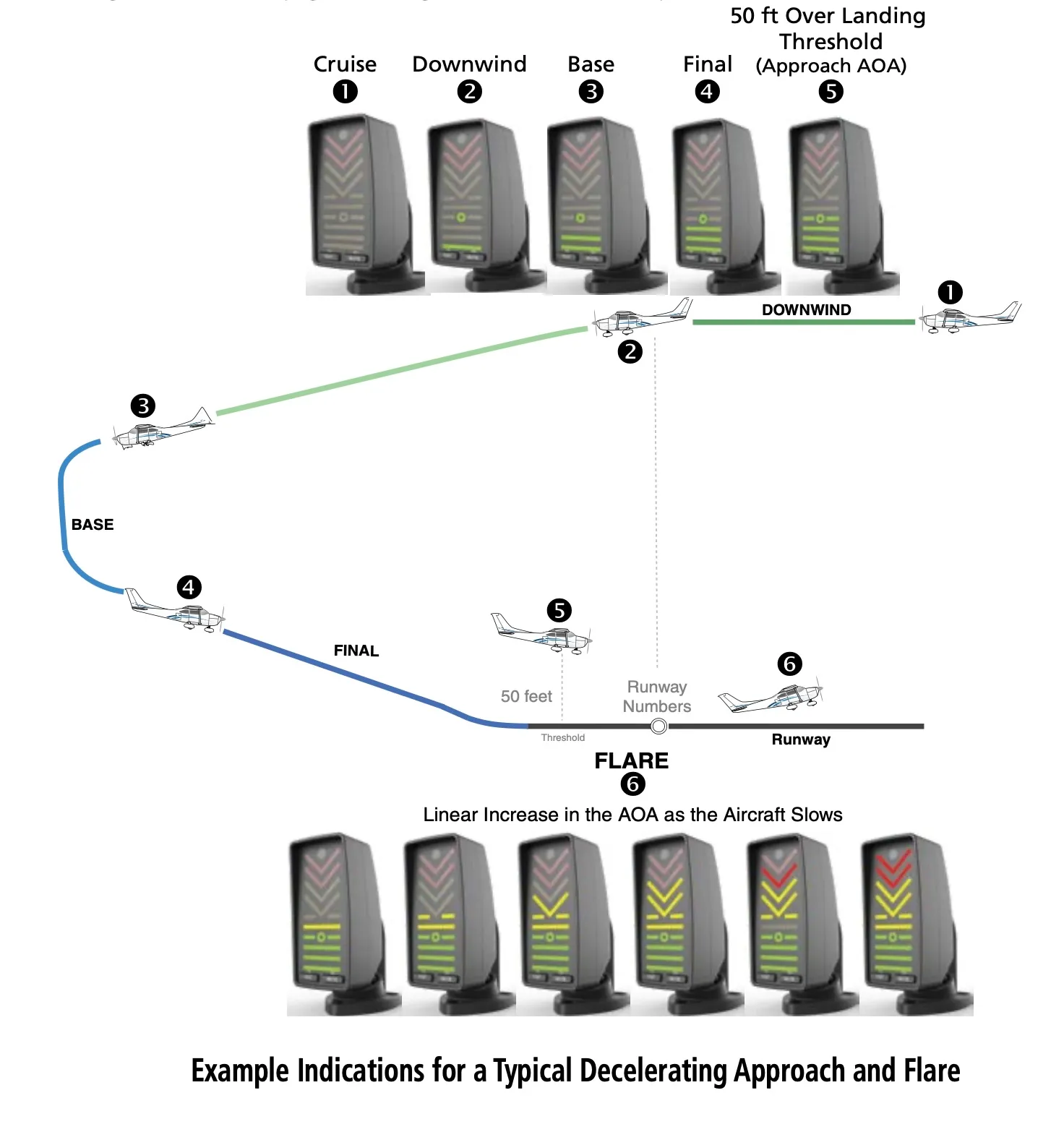Angle of attack indicators
Their necessity and how to fly with them
Planes that are typically used for commercial flights (eg. the Boeing 737 or Airbus A320) come with angle of attack indicators standard and pilots of those planes are familiar with how they work and what they do. However, these instruments are rare in the aging general aviation fleet. The GA community should do more to encourage their adoption and proper training to increase the safety of general aviation and reduce loss-of-control incidents.
What’s an angle of attack indicator??
Angle of attack indicators are instruments that monitor a plane’s “angle of attack” and let the pilot know how close they are to the “crictical angle of attack” where the plane will stall. From very early on in pilot training, it’s drilled into the student’s head that the plane can stall at any speed and exceeding this critical angle is the thing that must be avoided when flying low and slow.
For all the knowledge we require students to have of stall characteristics, it’s quite hard to know how close one is to the critical angle of attack without an AoA indicator. Stall speeds are published in the POH of every plane, but these are speeds when flying level at max gross weight. Real world stall speeds will vary depending on:
- Weight
- Bank Angle
- Temperature
- Density Altitude
- Center of Gravity
Angle of attack indicators do not vary their readings based on any of these things. They will show the pilot how close they are to the crictical angle of attack in any configuration.
Lack of AoA inidicators is a real problem
Despite the uncertainty regarding how close one is to the critical angle of attack, it can be easy to dismiss the importance of an AoA indicator because history and training make it seem like it’s not a big deal.
- The vast, vast majority of flights end up not needing an AoA indicator
- Pilots are trained to fly specific speeds in different phases of flight that have a safety margin built in. If they stick to these speeds (or at least close), they’re not going to stall. - Pilots are aware of the bank angles that will keep them safely within stall margins
- Pilots do weight and balance calculations for every flight to ensure that their weight and center of gravity will keep them within these safety margins.
So for the most part, flying specific speeds (called Vspeeds) will keep the pilot and passengers out of trouble.
Training and Vspeeds are not good enough though.
These airspeeds are never correct because we are only at gross weight and 1G sitting on the ramp.
The biggest cause of aviation accidents by far is “loss of control”. The vast majority of “LOC” accidents happen during approach, takeoff, and initial climb, ie when the plane is operating closest to its critical angle of attack. An AOPA report on accidents during flight training found that 81% of LOC accidents were due to stall/spin accidents. While AoA indicators will not prevent every stall/spin accident, increasing awareness will certainly help, and they are even more effective when paired with ESP or similar systems that will automatically attempt to prevent a stall.
Given these numbers, it seems clear that we need to prioritize outfitting the GA fleet with AoA indicators. The FAA made this easy 10 years ago by updating the regs to make AoA indicators straightforward to install, but in my opinion we should take this risk as seriously as midair collisions where the FAA started requiring ADS-B out.
Flying the angle of attack
Garmin has a great graphic showing how to fly the angle of attack for their particular display (other indicators display the information differently but you can apply it in much the same way).

This translates into different speeds depending on weight and other factors. However the angle of attack will always be the same. This means that you don’t need to mentally adjust when you’re flying the plane in different conditions. You can fly the wing (look outside), cross check it with the AoA indicator, and finally verify your speed.
Let’s give a practical example of what this looks like. Let’s compare the speeds of flying a Van’s RV-12 at Max Gross (1320) vs at a more typical solo flight: 1050.
| 1320 lbs | 1050 lbs | |
|---|---|---|
| Stall speed (Vso) | 48 | 43 |
| Base (1.4 x Vso ) | 67 | 60 |
| Final (1.3 x Vso) | 62 | 56 |
Most people don’t fly their pattern to the exact knot, so a typical pattern in an RV12 would be 75 -> 70 -> 65, touchdown at 60. This is way too fast if you’re flying light, and a 75 -> 60 -> 56 would be give much better performance. However, if that’s what you’re used to flying, you’re going to be going dangerously slow if you load the plane all the way up!
Climbout
AoA indicators don’t just help with nailing a perfect approach; flying the AoA can also improve your climb performance. This can be very important in mountainous airports in the summer where a pilot might see that their plane can handle the conditions, but they need to fly the plane correctly in order to achieve that published performance.